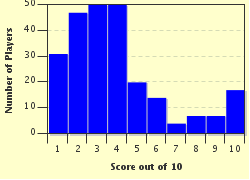Quiz Answer Key and Fun Facts
1. I never promised you a rose garden: Which flower has a name which is commonly used to describe another, related, flower?
2. Languages of the World: This probably-extinct language of Bolivia had only about 5-10 speakers remaining in 1991.
3. Sue Grafton's Alphabet: Which "J" book features Kinsey Millhone as the detective looking for the man who went overboard - "J is for ____"?
4. Maestro! Which composer was considered to be the founder of the English school of lute music, and was a favourite of Queen Elizabeth l?
5. Countries: Which area has a total area of 377 sq km, no natural resources, no indigenous population, but does have an active volcano?
6. Castles: Which of the following castles is reputed to have been captured by El Cid?
7. Author, Author! Coming from a literary family, it was no wonder this author would make his mark on the world of books. Which of the following authors first published work was called "Tragedy of Error"?
8. Dancing the night away: Which Spanish dance was possibly the origin of the Flamenco and definitely the Marengo, and has similarities to the Fandango?
9. "The Late Unpleasantness": Which American Civil War battle had General Nathan Bedford Forrest on the run despite his victory?
10. Between a Rock and a Hard Place: Which mineral is also known as "feather ore" or "grey antimony"?
Source: Author
CariM0952
This quiz was reviewed by FunTrivia editor
Nannanut before going online.
Any errors found in FunTrivia content are routinely corrected through our feedback system.

